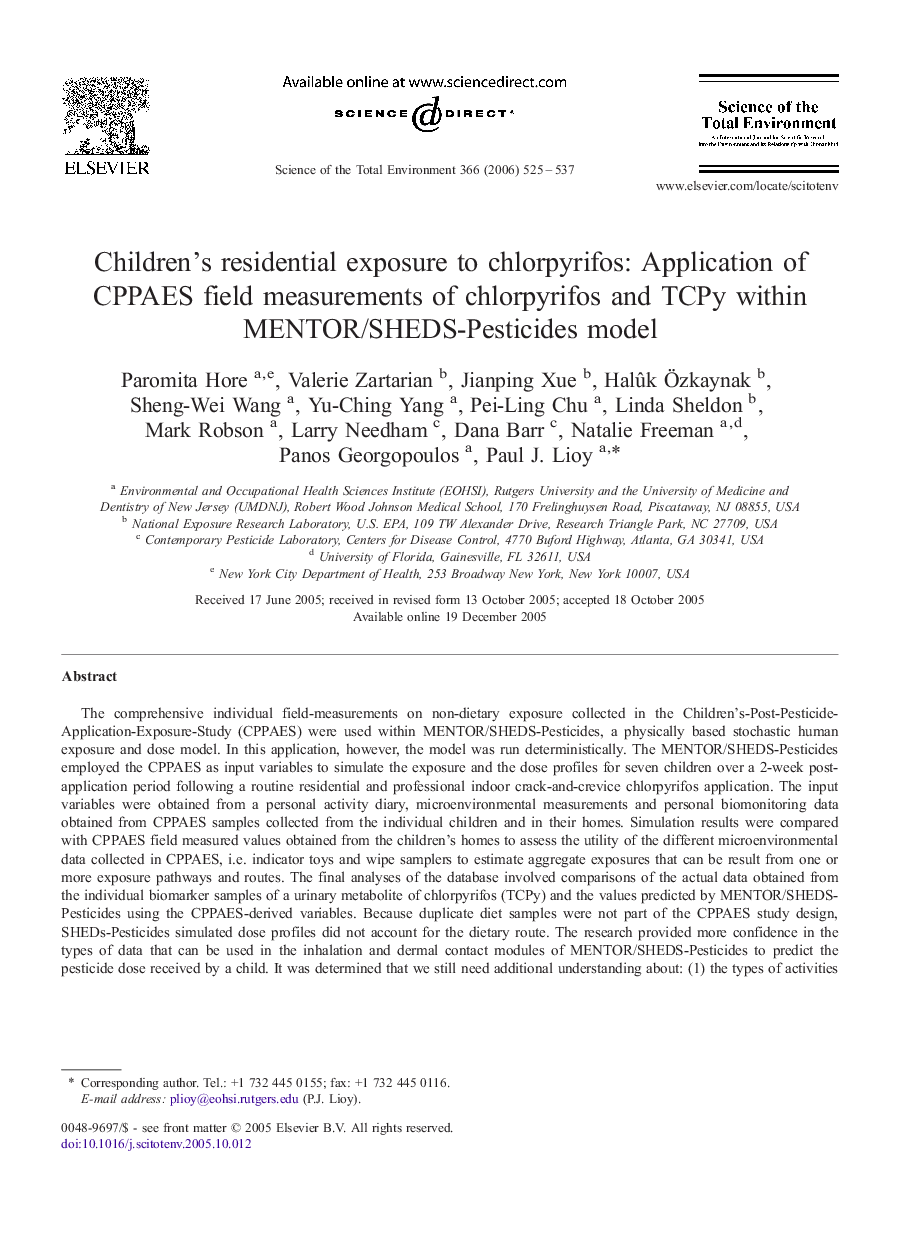| کد مقاله | کد نشریه | سال انتشار | مقاله انگلیسی | نسخه تمام متن |
|---|---|---|---|---|
| 4434111 | 1619971 | 2006 | 13 صفحه PDF | دانلود رایگان |

The comprehensive individual field-measurements on non-dietary exposure collected in the Children's-Post-Pesticide-Application-Exposure-Study (CPPAES) were used within MENTOR/SHEDS-Pesticides, a physically based stochastic human exposure and dose model. In this application, however, the model was run deterministically. The MENTOR/SHEDS-Pesticides employed the CPPAES as input variables to simulate the exposure and the dose profiles for seven children over a 2-week post-application period following a routine residential and professional indoor crack-and-crevice chlorpyrifos application. The input variables were obtained from a personal activity diary, microenvironmental measurements and personal biomonitoring data obtained from CPPAES samples collected from the individual children and in their homes. Simulation results were compared with CPPAES field measured values obtained from the children's homes to assess the utility of the different microenvironmental data collected in CPPAES, i.e. indicator toys and wipe samplers to estimate aggregate exposures that can be result from one or more exposure pathways and routes. The final analyses of the database involved comparisons of the actual data obtained from the individual biomarker samples of a urinary metabolite of chlorpyrifos (TCPy) and the values predicted by MENTOR/SHEDS-Pesticides using the CPPAES-derived variables. Because duplicate diet samples were not part of the CPPAES study design, SHEDs-Pesticides simulated dose profiles did not account for the dietary route. The research provided more confidence in the types of data that can be used in the inhalation and dermal contact modules of MENTOR/SHEDS-Pesticides to predict the pesticide dose received by a child. It was determined that we still need additional understanding about: (1) the types of activities and durations of activities that result in non-dietary ingestion of pesticides and (2) the influence of dietary exposures on the levels of TCPy found in the urine.
Journal: Science of The Total Environment - Volume 366, Issues 2–3, 1 August 2006, Pages 525–537